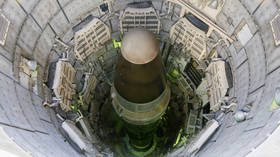It may not be bullish but it’s better than endless doom

A few things are starting to fall into place, which could give investors and economists cause to start looking for things other than complete disaster.
An apparent floor in crude price, signs that something of a turnaround in commodities such as copper and steel, and a resilient gold price, are starting to offer economic planners and business people something approximating surety that they can now start basing their plans of something other than an economy in freefall. That’s not to say things are looking better anytime soon – they are looking worse – but it is to say there is now increasing scope for planning a response to the greatest economic disaster in generations.
At long last the CBR has twigged to the fact that its liquidity injections to support the banking system have been used to hammer the Rouble. That’s not to say the Russian currency hasn’t been in need of coming down – it sure has – but the fact that it has come down over a 3 month period where the safest bet in town was to simply put Roubles into dollars and hold off on spending means that the longer term implications of its devaluation are still ahead of us.
This week it has tightened up further on those liquidity injections with a further increase in the overnight and weekly funds rate to 12%. It is also making it clear that there is some scope for the Rouble to move higher, and that the current price of crude at around $40/bbl is providing more support than was envisaged in its worst case scenario of around $30/bbl. All of this is starting to add to the possibility that the Russian currency may start to stabilize at about the level the central bank intended and that it will remain within sight of 36 to the dollar, and 41 to the bi-currency basket.
Elsewhere there are also signs that if things aren’t about to pick up, then they are at least putting up a fight before they get worse. Spot steel prices and iron ore prices have begun to at last drift higher with expectations that Chinese consumption won’t drop off the face of the earth, and that prices in the $60-$80 dollar per tonne range can be expected to continue – particularly while stockpiles in China remain at about the 30 days supply mark. Other metals getting a pick up in recent weeks include Aluminium, up 9% last week to $1470 per tonne, and copper, up 13% to $3570 per tonne. The devaluation of the Rouble adds significantly to the competitive position of Russian producers of these metals, and in largely explains the recent jump in share prices for Severstal and NLMK, amongst others.
Other commodities which have begun to offer an obvious upside include gold and silver – with Russia being a major producer of both. Gold has come into its own in the last 6 weeks with increasing concern about a global economy dogged by inflation over the longer term. The parlous current account and budget outlook for the United States, and the yields on Treasuries, have combined with increasing focus on what is obviously going to be a major economic slowdown there, to have investors asking more questions about the store of value that the dollar represents. This has motivated gold move back over $900 an ounce, with large funds also getting into buying large physical volumes of the metal. Within the last week silver has also begun to attract further interest, and it is also expected that platinum will move back towards its long term price ratio to gold of 1.5, rather than the current 1.1 – particularly with future supply being buffeted by major production issues in South Africa. Also worth noting are fertilizer prices, with it becoming increasingly likely that the collapse in prices was overdone, and with agricultural production in key world grain producers looking shaky due to climactic conditions.
The biggest card of all is oil. Everyone knows the magnitude of its fall and the impact on the Russian budget. Despite some analysts saying that we can expect an average of $35/bbl over 2009, with even the possibility that we can expect to see $25/bbl oil along the way, the April and December contract prices are both above the current spot price of about $40/bbl.
This brings us back to the Government and its outlays. It has announced major spending on infrastructure will be brought forward, to the extent possible, and that it will cover the forecast budget deficit for this year from the reserve funds. If this expenditure can be implemented effectively and in such as way as to keep the Russian economy moving, then this can flow through to the Russian services and retail sectors. The fact that there will now be a bigger focus on getting projects happening soon than speculating with the funds at hand means that although there is quite likely to be further bad news, the process of getting things moving will start to kick in, hopefully soon.
This coupled with the additional competitiveness of Russia’s commodity exports, means that although nobody could claim to see green shoots of recovery, there are at least things worthy of consideration as half reasonable bets during the economic slowdown. And a little luck could see those moving quickly get a reasonable return – the start of getting business moving again.
James Blake, RT












